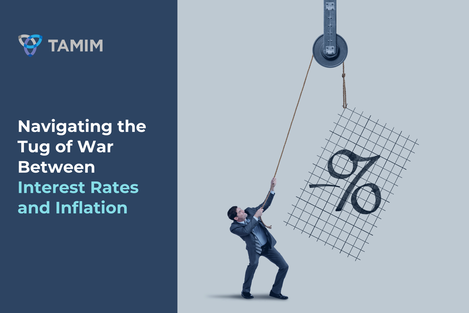Sometimes the macroeconomic outlook changes like the weather, and investors find themselves sailing in a crosswind of uncertainty.
The Reserve Bank of Australia (RBA) is ensnared in a catch-22 dilemma: whether to raise rates to tame inflation and risk plunging the economy into recession, maintaining the current status with the hope that inflation will abate and the economy will grow; or yield to calls for cuts due to cost of living crisis. The delicate balance between addressing inflationary pressures and safeguarding against economic downturns underscores the RBA’s reluctance to adjust interest rates, especially given the alarming rate of growing national household debt. In the broader global context, despite speculation surrounding the US Federal Reserve’s potential influence by election cycles, historical data reveal a consistent pattern.
Since 1980, the Fed has both hiked and cut rates in every election year except 2012, when rates remained at zero amid post-financial crisis recovery.
Often we see media speculation around interest rate movements which can tend to be overblown in either direction. Headlines calling for multiple rate rises could signify that we’re closing in on peak interest rates. Furthermore it wasn’t long ago that there was discussion around multiple rate cuts occurring during the 2024 calendar year.
Predicting inflation rates often hinges on the relationship with unemployment figures.
Logically, when more individuals find employment, increased disposable income propels consumer spending, thus stimulating economic activity. This interplay underscores the pivotal role of interest rates, which central banks manipulate as a lever to regulate economic growth and inflation. During periods of economic overheating, central banks may raise interest rates to mitigate inflationary pressures, while lowering rates during downturns stimulates borrowing and spending, bolstering economic activity.
Meanwhile, inflation, the measure of price increases for goods and services, exerts its gravitational pull on interest rates. High inflation erodes purchasing power, prompting investors to demand higher interest rates to offset the loss in value. Conversely, low inflation or deflationary pressures may warrant lower interest rates to stimulate consumption and investment, thereby fostering economic growth.
Given the fluid nature of interest rates and inflation, investors must adopt a strategic approach to prepare for varying scenarios.
Rising Interest Rates and Inflation
In this scenario, central banks hike interest rates to rein in inflationary pressures.
Investors typically face headwinds as higher borrowing costs dampen consumer spending and corporate earnings. Industries sensitive to interest rates, such as financials, growth stocks and utilities, may experience heightened volatility. In an environment like this, sectors such as healthcare act as a safe haven and are widely regarded as a reliable and defensive investment which tend to fare better during periods of economic tightening.
Falling Interest Rates and Rising Inflation
Central banks may respond to sluggish growth by slashing interest rates despite mounting inflationary risks.
Equity markets may experience a temporary boost as lower borrowing costs stimulate economic activity. However, sustained inflationary pressures could erode purchasing power over time, especially for fixed-income investments. Investors will often see strength in inflation-resistant assets such as commodities which can act as hedges against rising prices.
Stagflation
Stagflation is characterised by stagnant economic growth coupled with high inflation.
It poses a unique challenge for investors where traditional asset classes may struggle to generate meaningful returns in such an environment, prompting investors to explore alternative strategies. Historically, investing in dividend-paying stocks with strong cash flows and pricing power can provide a buffer against inflationary pressures. Additionally, allocating a portion of the portfolio to gold or inflation-linked bonds can serve as a hedge against the erosion of purchasing power.
Higher For Longer
A narrative that is being pushed lately is the likelihood that we see extended periods of higher interest rates.
This can impact investors in several ways. Firstly, stocks become less attractive relative to fixed-income investments like bonds, leading to a potential decrease in stock prices. Secondly, companies face higher borrowing costs, reducing profitability and potentially dampening stock prices. Additionally, the present value of future cash flows from stocks decreases due to higher discount rates, exerting downward pressure on prices. Prolonged higher rates can also slow economic growth, negatively affecting corporate earnings and overall market performance. Sectoral effects may vary, with interest-rate-sensitive sectors experiencing more significant declines compared to others.
What Action Should Investors Take?
Feeling anxious about macroeconomic developments is natural, but making investment decisions based on emotions is detrimental.
Reflecting on Howard Marks’ insights from his 2022 memo, “What Really Matters in Investing,” we’re reminded of the lesser relevance of macroeconomic news in daily investment decisions. Despite the media’s focus on fluctuating interest rates and economic forecasts, Marks argues that these elements are often unpredictable and inaccurately assessed in terms of their market impact. He emphasises the importance of adopting a long-term investment perspective, avoiding the pitfalls of speculative trading, and prioritising the intrinsic value of businesses. This aligns with the time-tested investment philosophy of Warren Buffett, who champions long-term ownership over short-term gains, suggesting that consistent, thoughtful investment outweighs the erratic nature of economic cycles and media hype.
In other words, the titans of the investment world advise we tune out market noise, concentrate on company fundamentals, and maintain a rational, disciplined approach to investing.
The TAMIM Takeaway
The tug of war between interest rates and inflation presents both challenges and opportunities for investors.
By understanding the dynamics of this relationship and preparing for various scenarios, investors can position their portfolios to weather market fluctuations and capitalise on emerging trends. Flexibility, diversification, and a keen awareness of macroeconomic indicators are essential tools for navigating the ever-shifting landscape of global finance.
As the battle between interest rates and inflation rages on, savvy investors stand ready to seize the moment and unlock the potential for long-term wealth creation.

